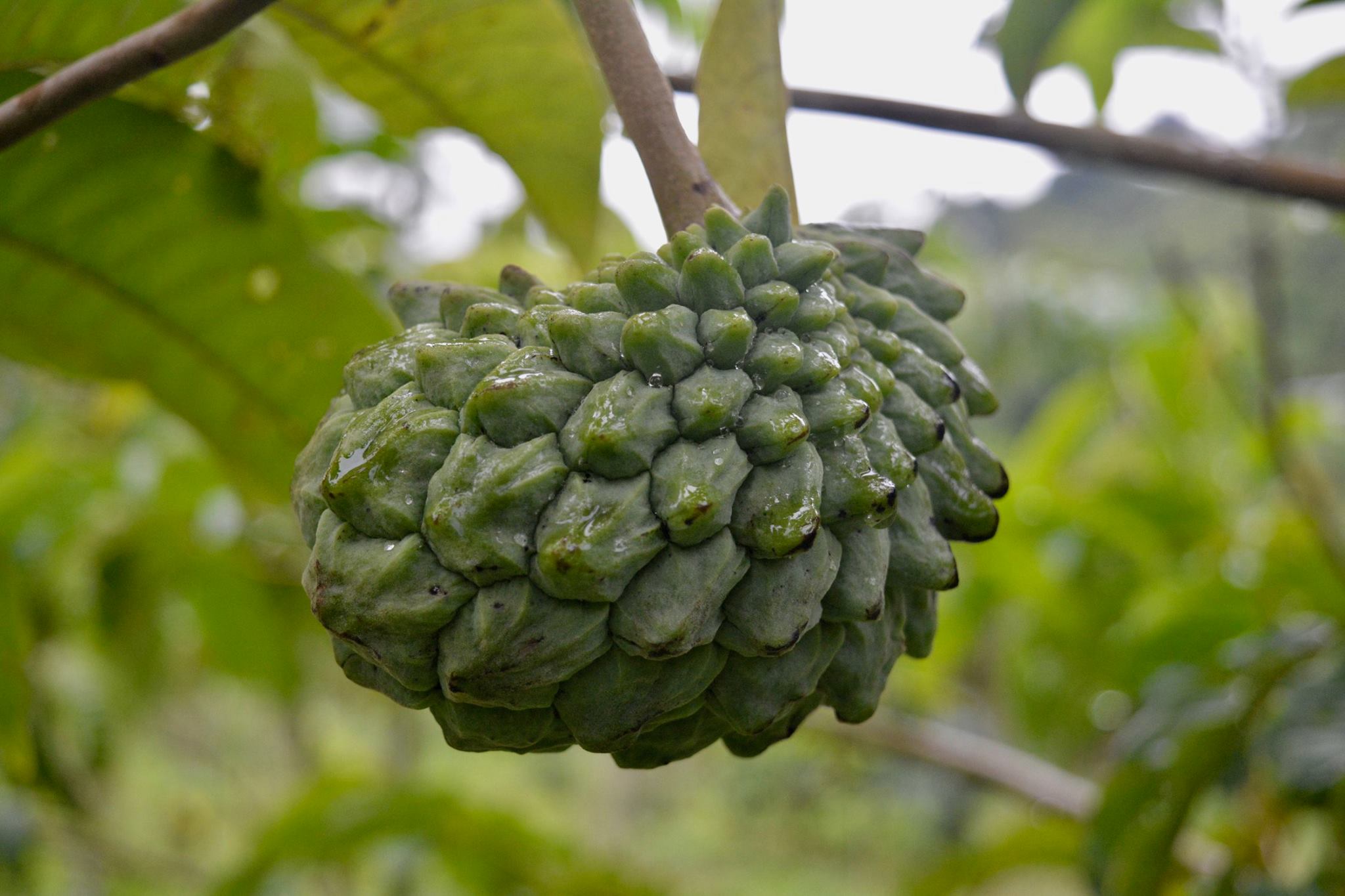
1. Custard Apple / Cherimoya
The Cherimoya (Annona cherimola) probably originated in the Andes of South America and is very easily available from markets and street sellers around Ecuador. Often called the Custard Apple as it has a very creamy texture and is often served/eaten with a spoon. It has a very sweet flavour. it is also rich in fibre, vitamins, and minerals, it may boost immunity, fight inflammation, and promote eye and heart health along with other health benefits.
It’s loaded with antioxidants including kaurenoic acid, flavonoids, carotenoids, and vitamin C. Has large amounts of vitamin B 30% RDA for 1 cup (160grams approx). The connection to eye health comes from the carotenoid antioxidant lutein levels which are particularly high. High in potassium and magnesium, it is likely to assist in regulating and preventing high blood pressure. Cherimoya’s flavonoids include catechin, epicatechin, and epigallocatechin.It is important not to eat the seeds and skin as they contain toxins that are damaging to health.
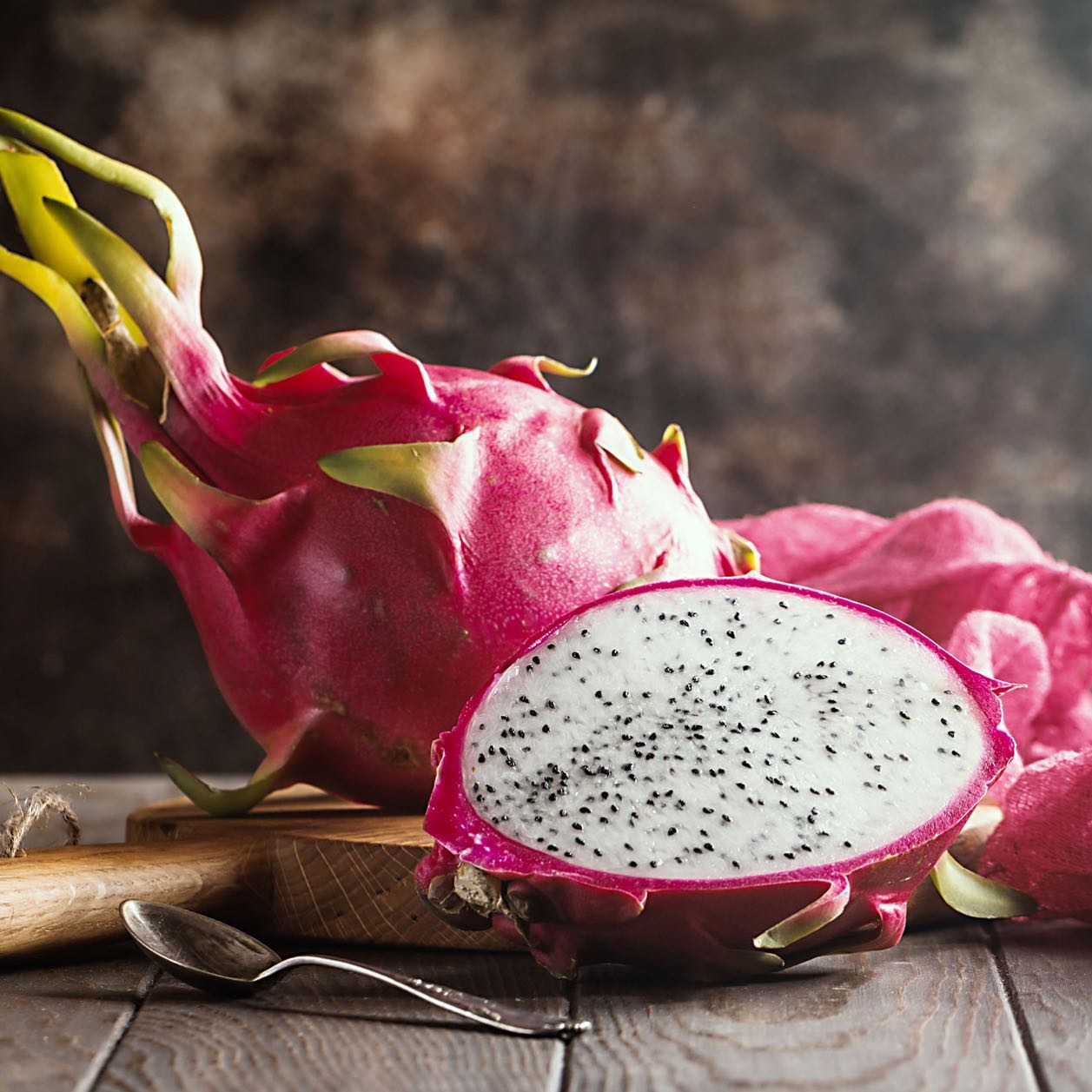
2. Pitaya / Dragon Fruit
There are 3 main types of Pitaya found in Ecuador in which the pitaya is native:
- Pitaya amarilla (Hylocereus megalanthus): this type of yellow dragon fruit has white flesh and distinct black seeds.
- Pitaya blanca (Hylocereus undatus): also known as white dragon fruit, this variety has vibrant pink skin, white flesh and black seeds inside.
- Pitaya roja (Hylocereus costaricensis): this red dragon fruit has bright reddish-pink skin with red flesh and black seeds.
Also packed with lots of healthy nutrients such as:
- 40 milligrams magnesium (10 percent rda)
- 0.1 milligrams riboflavin (8 percent rda)
- 0.7 milligrams iron (4 percent rda)
- 2.5 milligrams vitamin C (3 percent rda)
- 0.4 milligrams niacin (2 percent rda)
- 18 milligrams calcium (1 percent rda) All Per 100grams.
Personally, eating more than half of one of these certainly helps with digestion! They tend to have a very sweet taste and are freely available, especially the yellow and pink, in markets and from street vendors around Ecuador.
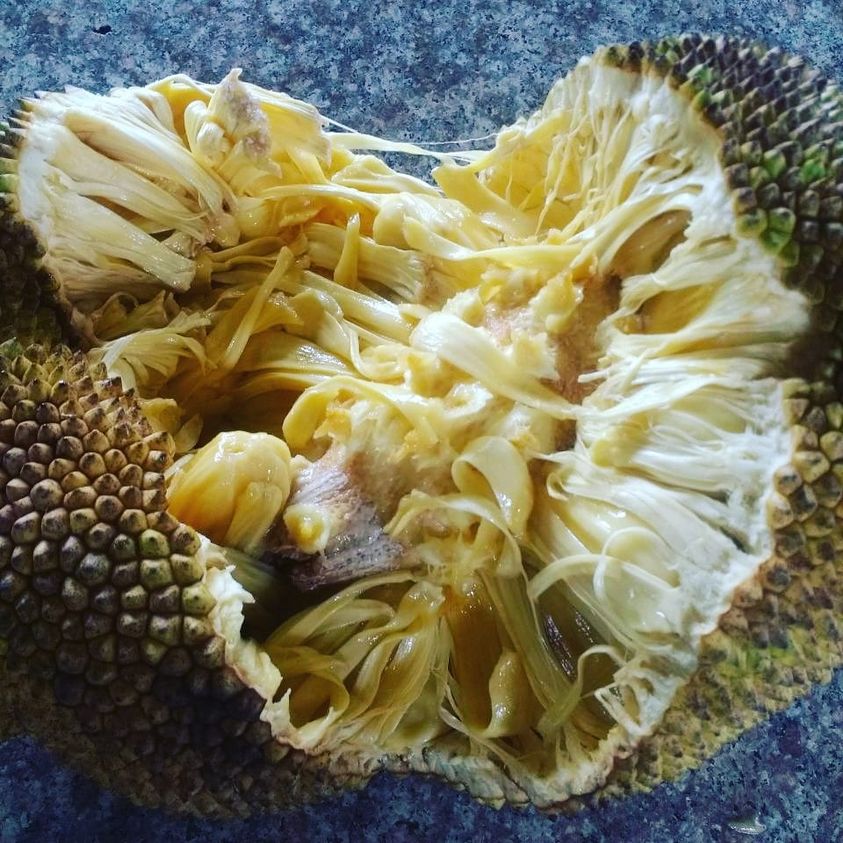
3. Jackfruit (Artocarpus heterophyllus)
Grown in most tropical regions around the world Jackfruit is originally native to India. It is part of the Moraceae plant family, which also includes fig, mulberry and breadfruit. Jackfruit has a spiky outer skin and is green or yellow in color. It is well known to be the largest fruit in the world growing up to 35kg in weight.
Jackfruit has an intensely sweet flavor and is arguably the origin of the Juicy Fruit Chewing gum flavor. It is also said that the natural latex produced when cutting the skin is the origin of chewing gum itself. Vegans and vegetarians often use the fruit of the jackfruit as a meat alternative, pulled pork imitation, for its meaty texture.
It is suggested to oil the knife before cutting into the skin to avoid the latex sticking to the knife. This fruit is more and more widely available at Ecuadorian markets.
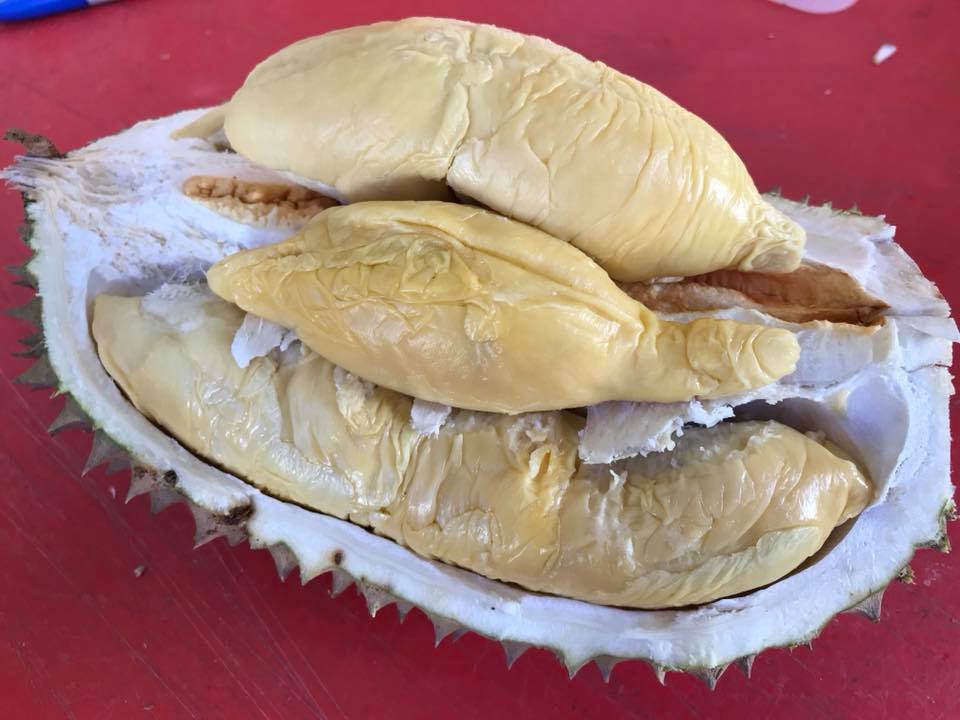
4. Durian
Although still quite rare in Ecuador, Durian has been cultivated for many years in Ecuador. The flavor is described as tasting like cheese, almonds, garlic, and caramel all at once. The durian is one of the most nutritious fruits in the world.
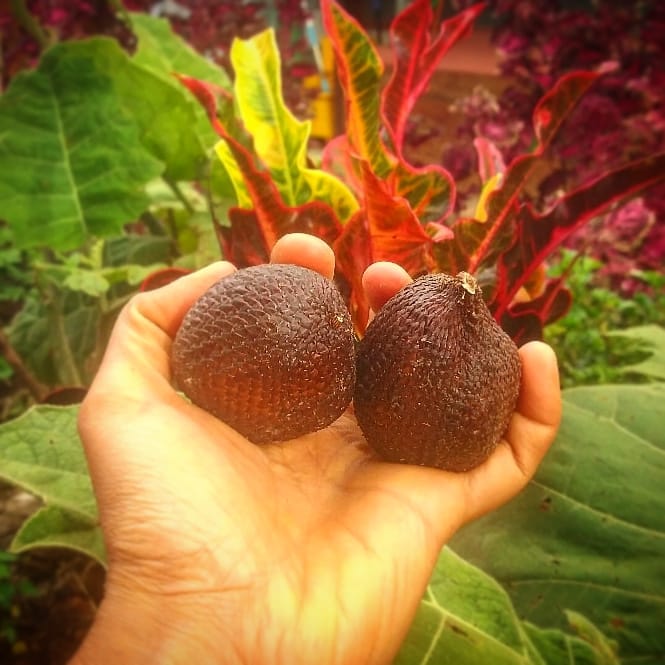
5. Snake Fruit / Salak
Although originally from Indonesia, Salak or Snake fruit is easily available in Ecuador from markets and fruit sellers. It grows on very thorny trees so it takes a certain skill to harvest. Once collected the skin is peeled back to reveal 3 segments resembling large cloves of garlic. A properly ripened snake fruit is dry and crunchy, with a taste similar to a bitter pineapple or jackfruit. The pulp is commonly eaten raw but is also used to make wine, juices, and candies.
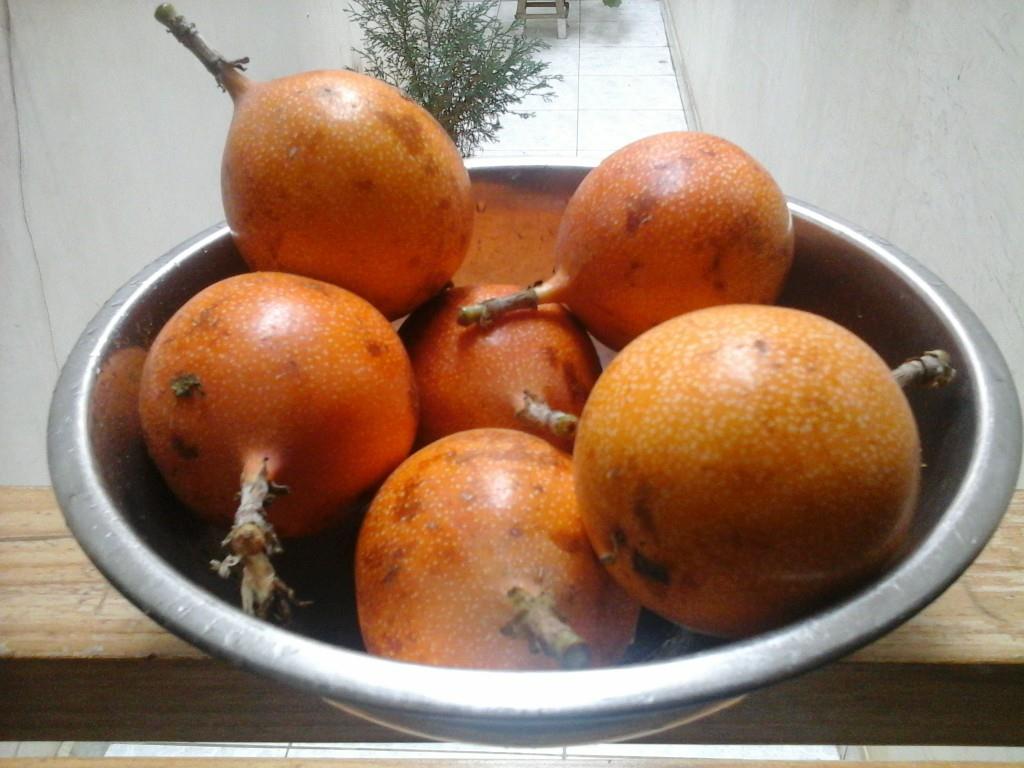
6. Granadilla (Passiflora ligularis)
The granadilla is native to Ecuador and the Andes Mountains of South America. Very commonly available in Ecuacdor being sold at markets and by street vendors at 6+ for a $1. It has a hard yellow/orange outer shell and the inside is of a “frogspawn” consistency. Sweet in taste the inside is eaten with a spoon.
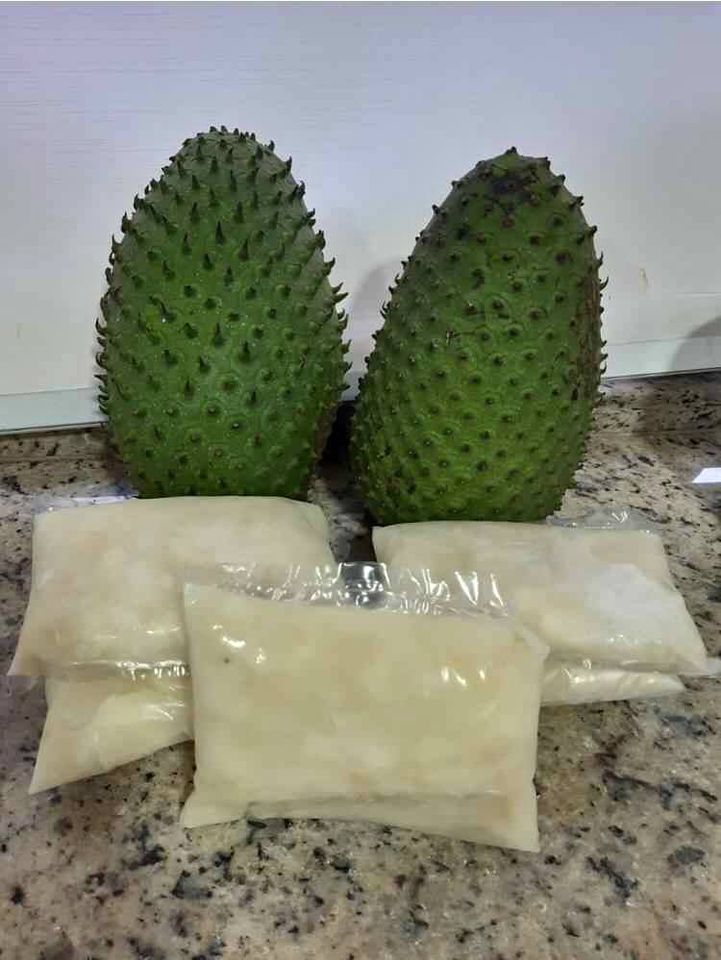
7. Soursop / guanabana
The Soursop is getting more widely known due in some part to its potential health benefits and anti-cancer properties. Known in South America as guanabana the fruit is sold at markets and by street vendors. The white soft inside flesh is either eaten as is or pulped into juice or paste and is also widely sold in that format. It is of the same genus as the above-mentioned cherimoya or custard apple.
Its taste is very unique, many of the fruit’s fans say the taste of soursop is exotic and lovely. It has flavors that are a combination of strawberry and pineapple, with sour citrus flavor notes that contrast with its creamy texture, which is similar to the flavors of coconut and banana.
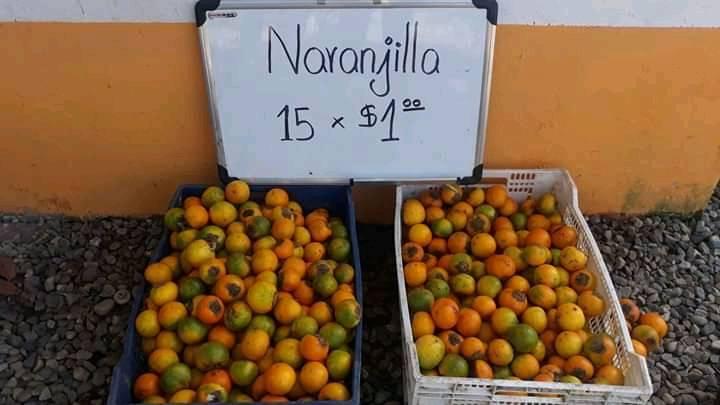
8. Naranjilla / lulo
Pronounced nah-rahn-hee-yah this fruit is usually blended with water and sugar to make a refreshing juice drink. The word naranjilla itself translates as small orange although the flavor and insides are not similar.
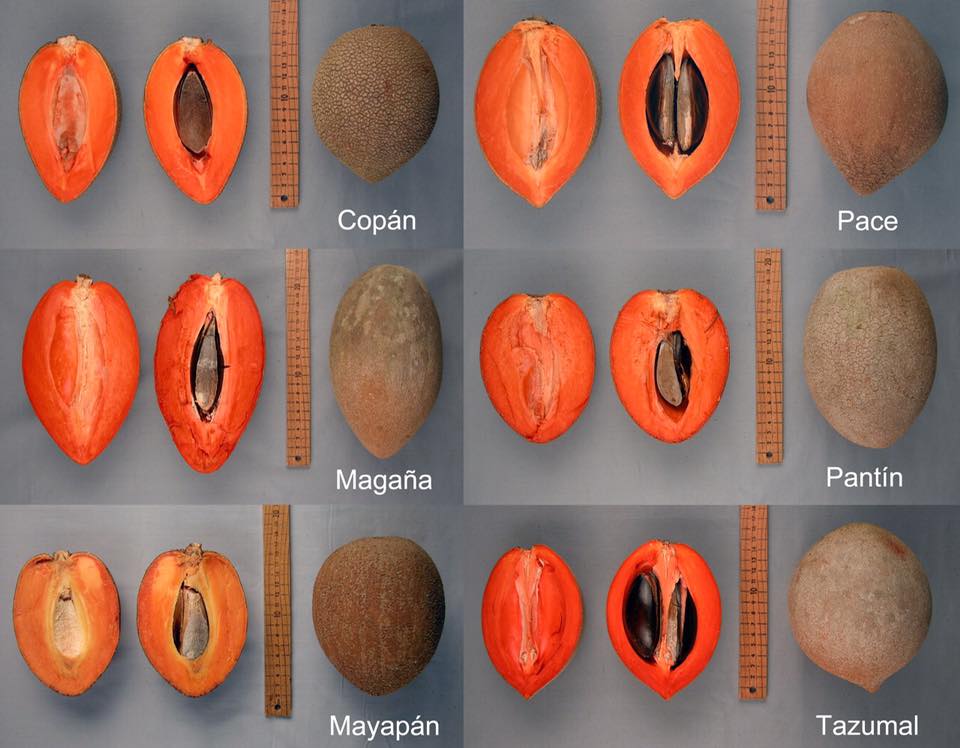
9. Mamey Sapote
Native to Central America, this is also widely available in Ecuador and visitors may be unaware of its existence. The word “sapote” is believed to have been derived from the Aztec “tzapotl”. It is believed by many to have been the main sustenance of Cortez on his march from Mexico City to Honduras. It is often eaten straight from the shell, cut in half, with a spoon. It is described by some to have the taste and sensation of chocolate cake!
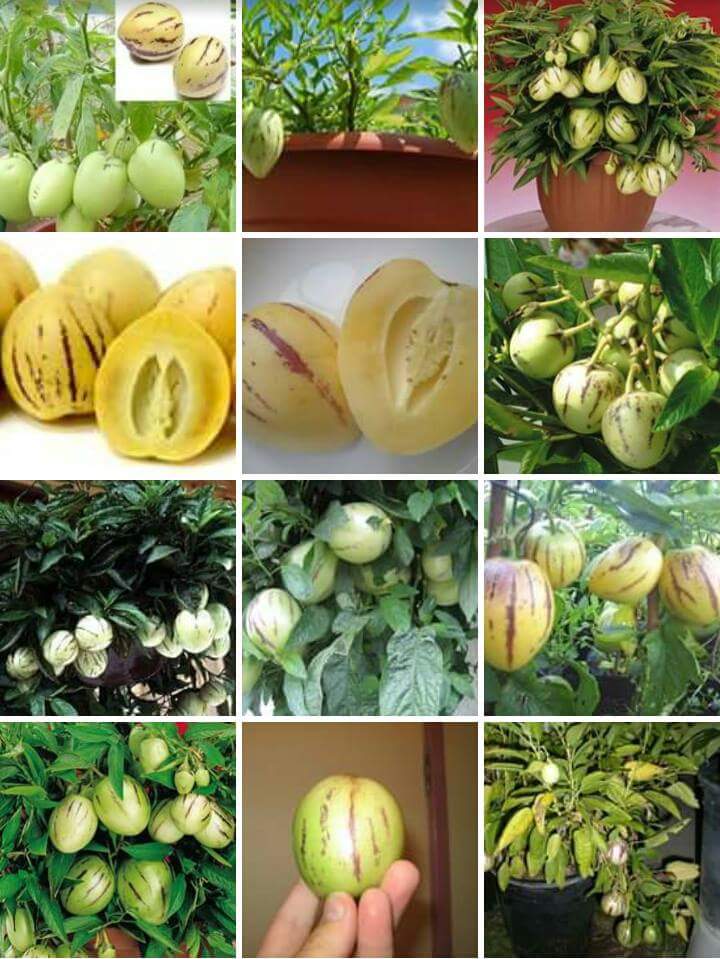
10. Pepino
The sweet, mild-flavored pepino is a member of the nightshade plant family, related to the tomato, potato, and eggplant. It has a thin skin you can bite into and a mild sweet taste said to be somewhere in between cucumber and melon. Often served raw in salsas and salads and cooked alongside meats as a vegetable.
Final Words
These rarer fruits of Ecuador may look a little weird at first, but you’ll quickly get used to them. As an added bonus, the more fresh fruits and vegetables that you’re able to include in your weekly shopping, the lower your cost of living will be.
What other fruits would you consider worthy of being on this list? Leave a comment with any ideas.

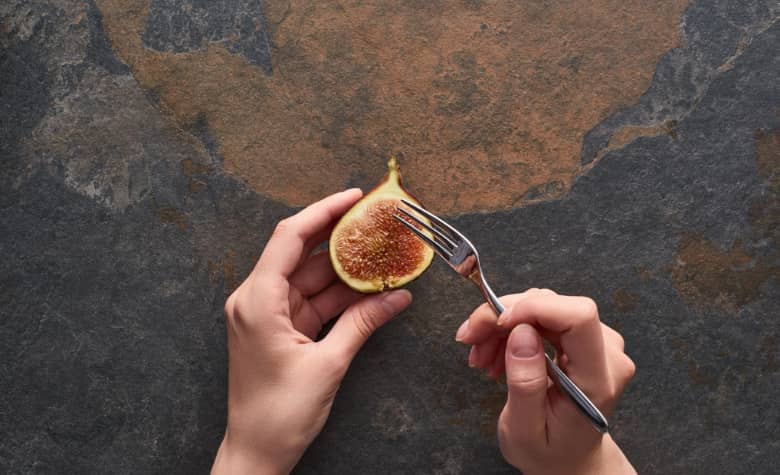



















3 Responses
Nice article, looking forward to getting there.
Stephen, I was searching for sources of some of these tropical fruits , especiallu Durian to bring trees and seeds to the Sarayakyu community so they can start a pilot project. I also am a Durian addict who survives on freeze dried imported Durian from Thailand. Rex=constituted with coconut water it is as close to the real thing as one can ger=t here….maybe. I heard that a farm in Los Bancos de San Miguel grows it. Can you help me with any resources for #1 DURIAN, and also Mangosteens, Mamey zapotes, Rambutan, Pitajaya, and lychee. Ordering cases of the fruits, and buying plants ia also of interest. I do not know how to search members and send a friend request but I would like to ba in contact. My email is [email protected] 0959928401
sorry so many typos, recently hurt my hand and still a little inaccurate typing